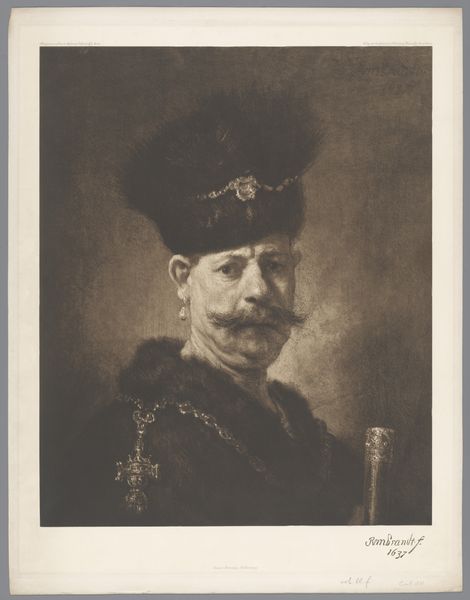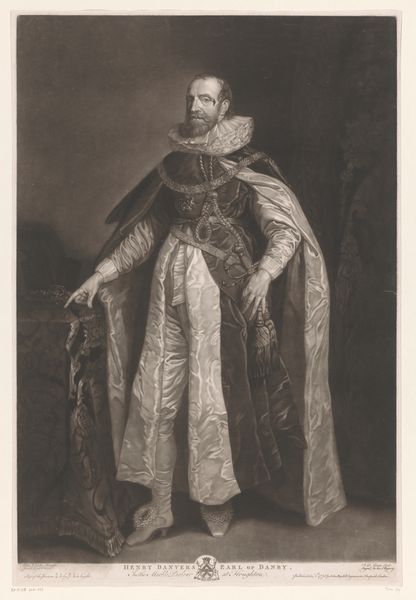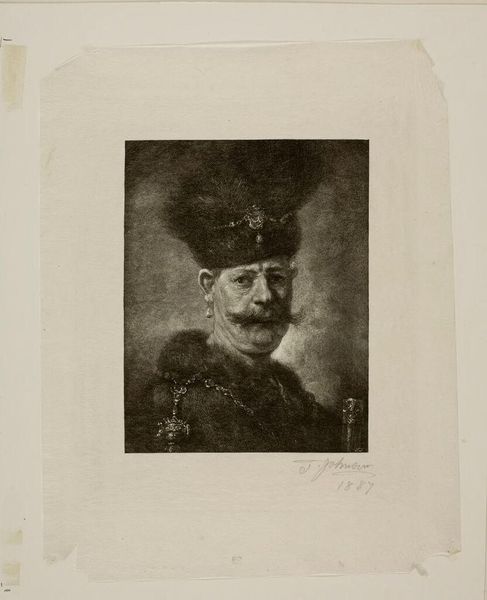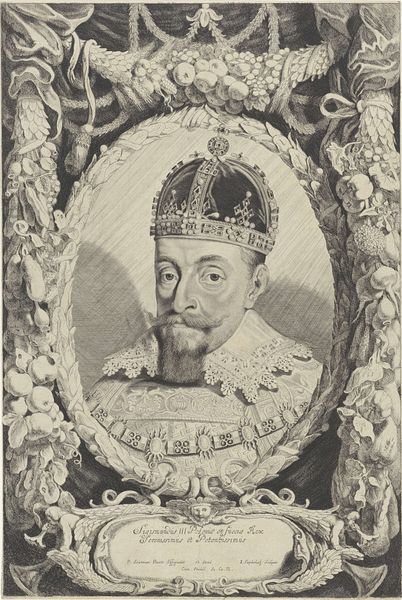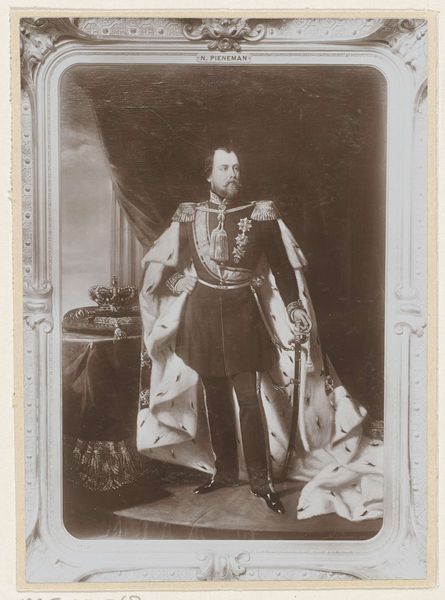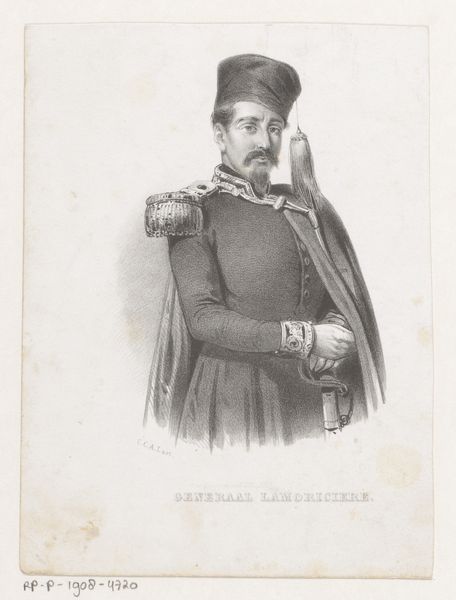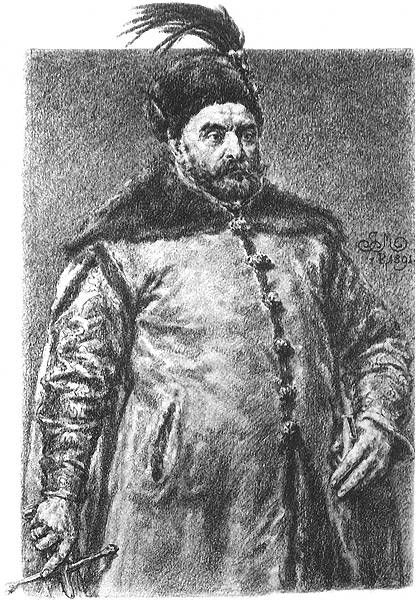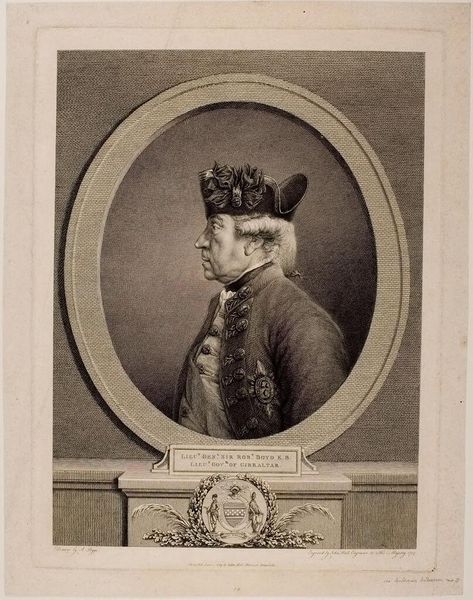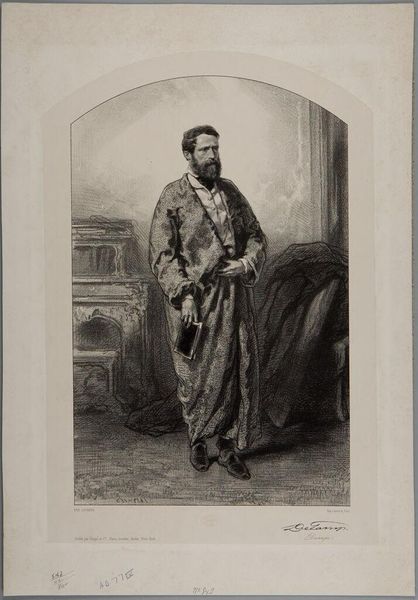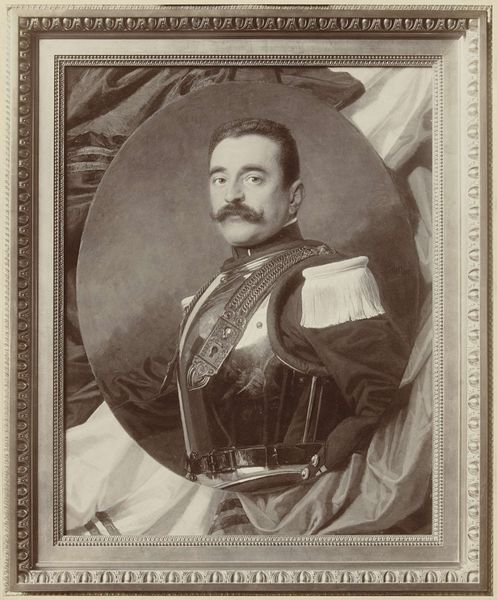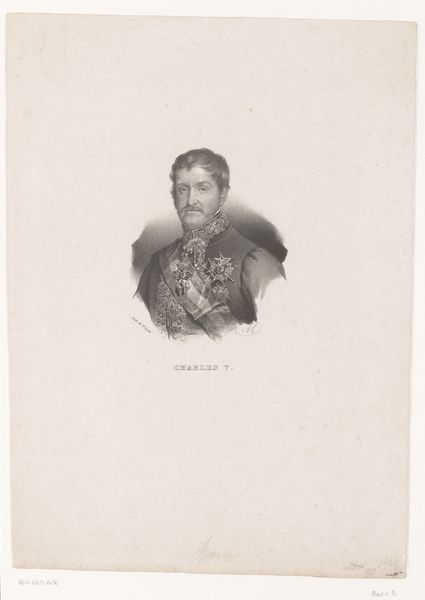
A Polish Nobleman 1785 - 1799
0:00
0:00
drawing
#
portrait
#
drawing
#
black and white
#
monochrome photography
#
men
#
genre-painting
#
academic-art
#
monochrome
#
decorative-art
#
monochrome
Dimensions: 49 × 38 in. (124.5 × 96.5 cm)
Copyright: Public Domain
Curator: Here we have "A Polish Nobleman," a drawing made between 1785 and 1799 by the Imperial Russian Tapestry Manufactory in Saint Petersburg. Editor: My initial reaction is one of somber authority. The stark monochrome and the nobleman's severe gaze certainly convey a sense of power and perhaps even a touch of melancholy. Curator: It’s intriguing to consider the social and political dynamics embedded in a work like this. The tapestry manufactory was under imperial control, and producing images of foreign dignitaries and nobility was a significant part of their public-facing role. Editor: Absolutely. It seems crucial to acknowledge that visual representation in this context becomes a tool. What power dynamics were at play in choosing to portray this particular Polish nobleman? How would this image have circulated, and to what ends? Curator: Those are important questions to ask. The depiction, likely based on an earlier painting by Rembrandt titled “A Man in Polish Costume,” speaks to the Romanticism movement's interest in different national identities and exoticized representations. It also demonstrates a circulation of visual culture throughout Europe. Editor: I'm curious about this almost romanticized ideal of masculinity being projected. I keep returning to how constructed that image is. That hat, the jewelry, they signify so much beyond just status, don't they? And let's talk about who 'nobleman' means and represents at this specific moment. Curator: Indeed, these elements are signifiers of social status, wealth, and the complicated relationships between Russia and Poland in the late 18th century. The nobleman is enrobed with furs and chains, markers of privilege that often overshadow the people on whose backs it's all built. Editor: Thank you, it is almost like, we're confronted not only with this man's presence but the system that supports his elevated position. Reflecting on that complexity makes engaging with a work like this so essential, because if this representation can be that curated, we have to remember that social and class stratifications come down to an intentional manufacture of identities. Curator: Examining works such as “A Polish Nobleman” provides us with a critical lens to dissect not only artistic choices but the inherent power structures that are woven within them. Editor: Yes, and it urges us to remember these pieces within the intersectional narrative that informs every level of this world.
Comments
No comments
Be the first to comment and join the conversation on the ultimate creative platform.
